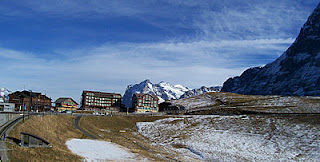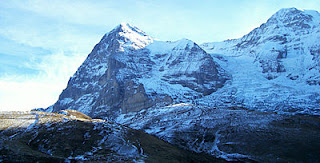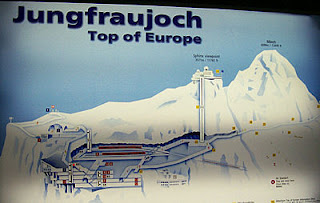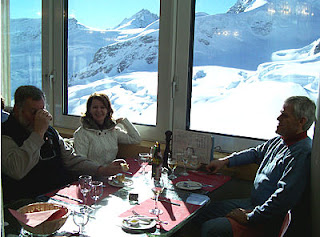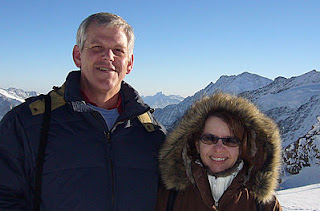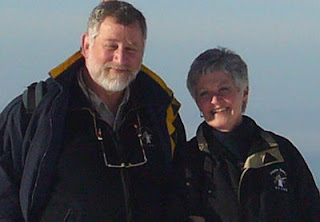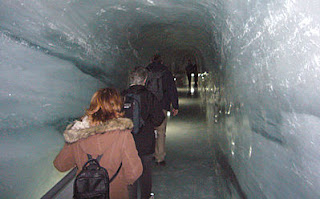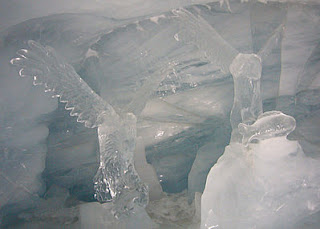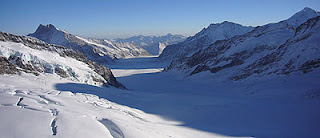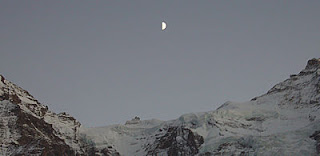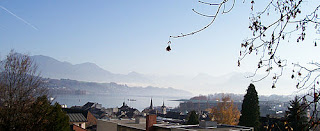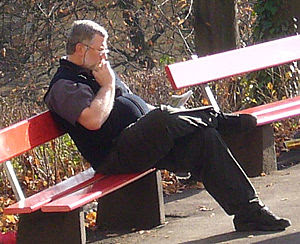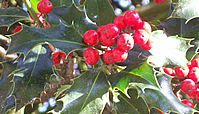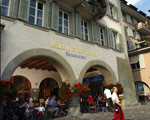On Thursday 30 November 2006 Ronel had to take care of other duties, so Pierre took us to visit Zürich, a short train trip from Oberägeri. From the station it was but a short walk to the old part of the city, called Aldt Stadt in German.

The crest of Zürich has two rampant lions, a theme we encountered again in embellishments on the older buildings.
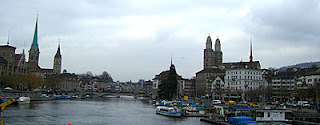
Zürich is the largest city in Switzerland (metropolitan population is around 1.3 million) and capital of the canton of Zürich. The city is Switzerland's main commercial and cultural centre and according to several surveys in 2006 and 2007, Zürich was named the city with the best quality of life in the world.

The city is situated where the river Limmat leaves the northern end of Lake Zürich and is surrounded by wooded hills.
The geographic (and historic) center of the city is the Lindenhof, a small natural hill on the left bank of the river.

We soon passed the statue of Johann Heinrich Pestalozzi (1746 - 1827). Born in Zurich, Pestalozzi was a pedagogue and educational reformer.
His early experiments in education ran into difficulties but he persisted and what became known as the 'Pestalozzi Method' came to fruition in his school at Yverdon (established in 1805).
Instead of dealing with words, he argued, children should learn through activity and through things. They should be free to pursue their own interests and draw their own conclusions.

The streets of the Aldt Stadt are very typical of old Swiss cities. We walked along gaping at the rich heritage of architecture, fountains and statues.
The projecting bay windows are a regular feature of the older Swiss architecture, lending an interesting character to the otherwise sometimes plain buildings. Of course, Christmas decorations were in evidence everywhere.
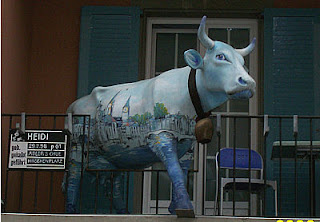
We were delighted to spot Heidi up on a second-floor balcony, happy that we could go home and say that we saw a Swiss cow complete with cowbell.
This one was a bit lifeless and very blue, but who cares? The owner went to a lot of trouble to build the balcony railing around Heidi. She seems to be stepping off the balcony!

The Swiss fountains are awesome!
This one is quite colourful with lion heads on the plinth spouting water from their mouths, rising up through a blue and green column with a knight in shining armour on top, clutching his sword and bearing the blue and white city standard. He seems to be eternally on the lookout for the advancing hordes of the enemy.
We did not follow a map, but it was not difficult to “stumble upon” the important landmarks.
We walked around the Grossmünster (great minster), a Romanesque-style church that played an important role in the history of the Protestant Reformation.

It is one of the three major churches of Zürich (the others being the Fraumünster and St. Peterskirche). Construction of the present structure commenced around 1100 and it was inaugurated around 1220.
The Grossmünster was a monastery church, vying for precedence with the Fraumünster across the Limmat throughout the Middle Ages.
There is a likeness of Charlemagne (also called Karl der Grosse, or Charles the Great, or Carolus Magnus) on the wall of the Grossmünster.

According to legend, Charlemagne (King of the Franks from 768 to his death) discovered the graves of the city's patron saints Felix and Regula and had the church built as a choristers' cloister on the spot. Recent archaeological evidence confirms the presence of a Roman burial ground at the site.
In the first half of the 16th century the Grossmünster was the starting point of the Swiss-German Reformation led by Huldrych Zwingli and Heinrich Bullinger. The theological college then annexed to the cloister was the origin of what is now the University of Zürich.

The Fraumünster Church is situated on the bank of the river Limmat directly opposite the Grossmünster. Founded in 853 by King Louis the German, this church with its convent was inhabited by the female members of the aristocracy of southern Germany. It enjoyed the patronage of kings and the right to mint coins in Zürich until well into the 13th century. Ownership of the church and convent passed to the city of Zürich after the Reformation.
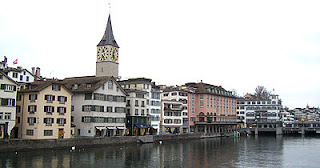
The steeple of St Peter’s Church can be seen on this photograph. St. Peter's is the oldest church in Zürich, its origin going back to before 900. It was first mentioned in 857, when King Louis the German gave it as a gift to two of his daughters, one of whom later became the first abbess of the Fraumünster. The church is famous for the largest clock face in Europe, 8.7 meters in diameter. The minute hands alone are almost 4 meters long. The 5 bells date from 1880.

When it was time for lunch we had to find some likely venue for the purpose, but we wanted to go somewhere a little special. After some walking up and down the streets, we found the Blockhus Bar and Restaurant. It did not look like much from the outside, but the menu looked interesting, so we decided to give it a go. The inside was a different story altogether, quite amazingly decked out in a sort of Christmas theme along the upper walls and the ceiling and with some very striking artworks on the walls. The proprietor was very friendly and the food delicious. After a leisurely lunch we were ready to roam the streets of Zürich once more, slowly making our way back towards the station.

On a more modern note, we came across a small park between two busy roads, where some rather fetching nude bronze figures were enjoying the sunshine.
This was an unexpected gem! The figures give a playful and very mischievous feel to the park.

Even the girls at the swings in the background are bronze statues. Since the statues are life size one can easily be fooled to think they will move any minute!

Since it was already the end of November, Christmas was in the air. The driver of this tram was dressed up as Father Christmas and the tram was further staffed with Angels to look after the kiddies.
While we watched several mothers arrived with small children in prams. They bought tickets and the children were taken on board for a roundabout ride. What a lovely idea, giving the mothers a break.

Back on the bank of the Limmat river we found this lady feeding the swans. They seemed very tame, so we guessed she must be an old friend to the swans.

The swan is such a beautiful bird, no wonder they take the spotlight in Tchaikovsky's ballet Swan Lake.

We could not resist photographing this very imposing marble-clad entrance guarded by a pair of golden lions. The iron-clad wooden doors also boast lion head knockers.
We never found out what the building was, but it looked rather official, with busts of historic figures above the ground floor windows.
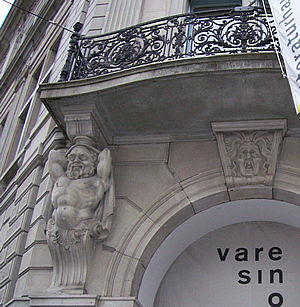
Near the station we passed another imposing building, now the home to several shops, in the central business district. We loved the gargoyles supporting the balcony with its intricate wrought-iron railing.
Well satisfied with our exploration of Zürich, we made our way back home. The following day, Friday, we spent quietly with Pierre and Ronel and the children, Lizelle, Jehane and Armand.
Friday evening we all enjoyed a lovely dinner at the “bim Fritz” restaurant in Zug, saying good-bye to Pierre and the family. Early Saturday morning we caught the train on the next leg of our journey - to Paris!
Find out about Zurich Hotels.

